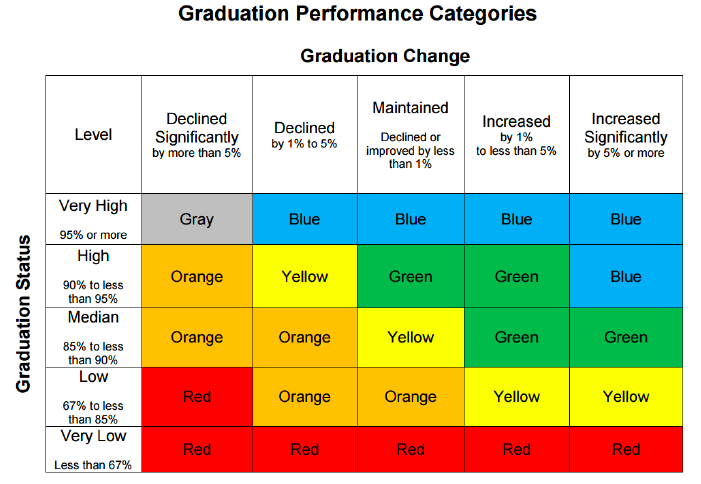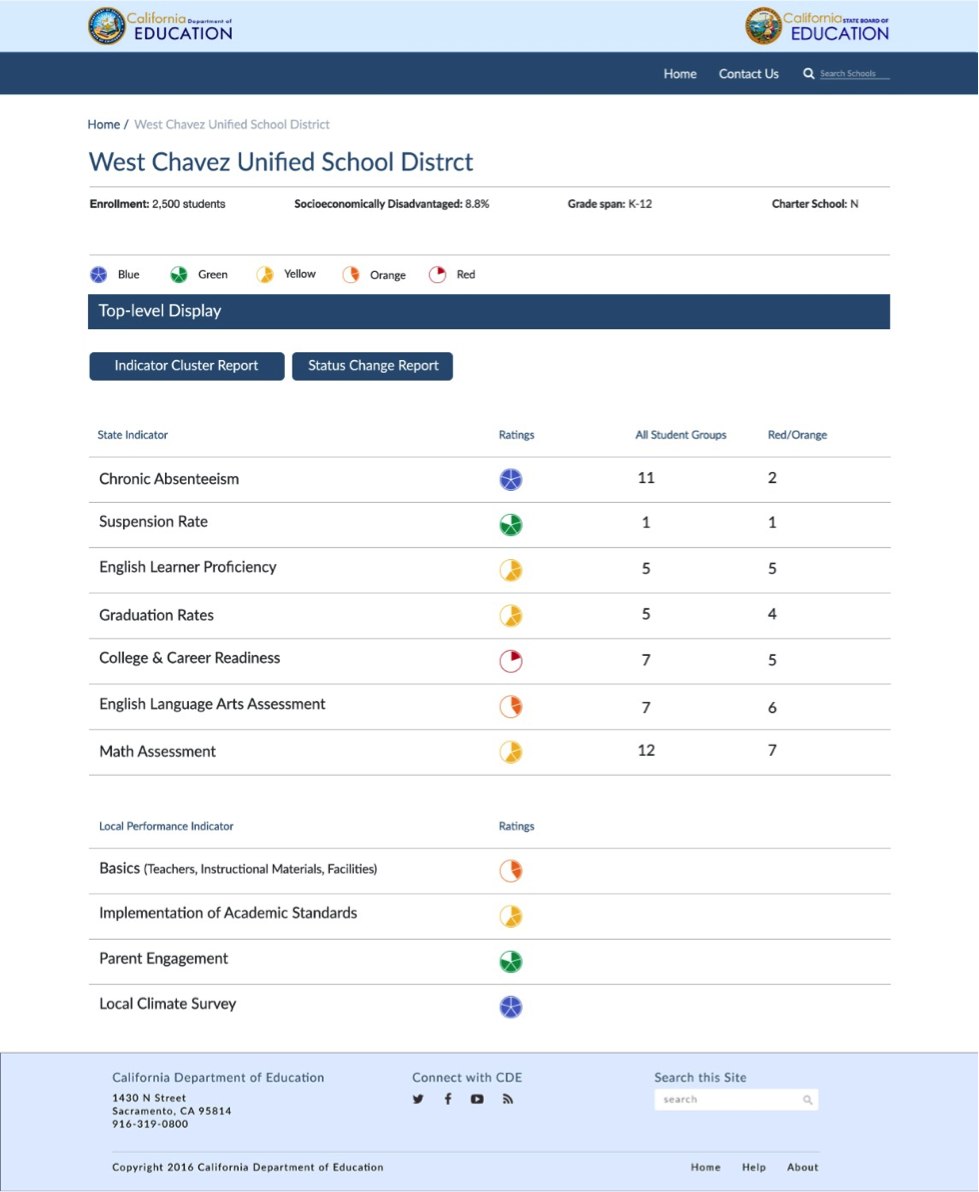California’s New Accountability System Taking Shape
Author: Rick Phelan
Published: 09.28.16
 California’s State Board of Education took action to approve the Local Control Funding Formula’s initial evaluation rubrics on September 8. The rubrics set the foundations for California’s new local, state, and federal accountability system. This blog post shares information on the State Board of Education’s decision and how it reflects a new system for California public schools that supports districts in a process of continuous improvement.
California’s State Board of Education took action to approve the Local Control Funding Formula’s initial evaluation rubrics on September 8. The rubrics set the foundations for California’s new local, state, and federal accountability system. This blog post shares information on the State Board of Education’s decision and how it reflects a new system for California public schools that supports districts in a process of continuous improvement.
Multiple Measures vs. Single School Rating
For 15 years, California relied on the Academic Performance Index (API). This index provided a single number by which schools were evaluated. State policy makers and many educators look back on this ‘single school rating’ and recognize its limitations. “The Academic Performance Index gave us very little guidance in trying to help schools with low numbers because it did not identify specific areas where schools were falling short,” said State Board of Education President Michael Kirst.
Rolling out the new evaluation rubrics, the California State Board of Education looks to establish an accountability system that will serve multiple functions, including providing guidance to parents, highlighting schools’ strengths, diagnosing their weaknesses, and helping educators design and implement improvement strategies. Rather than offering one rating, the new accountability system establishes multiple measures with distinct advantages over the old system:
- It gives parents, educators and the community more tools to understand what is happening at their schools and hold schools accountable for any problem areas.
- Promotes equity by helping to identify disparities among student groups.
- Supports continuous improvement by more clearly identifying schools that need help and pinpointing where they need it.
New Metrics Based on Local Control Funding Formula
The State Board of Education is setting up the new accountability system to gauge progress on the eight state priorities identified by the Local Control Funding Formula (LCFF). Among these are basic services, student achievement, school climate, and parental involvement. Performance standards are being established using a model that shows status (how a school or district fared last year) and change (how much they have improved or declined over a period of time). Schools will be rated based on a combination of these measures and assigned one of five performance levels. From highest to lowest, the categories are: Blue, Green, Yellow, Orange, and Red. Status and change thresholds were constructed analyzing current data to express where districts and schools are now.

Diagram 1: Graduation Rate Performance Standards
Using high school graduation rates as an example, five status levels were set, with a low of a graduation rate of less than 67 percent (considered very poor) to a high of a 95 percent graduation rate (considered very high). In addition, five rates of change were set, from a low of a decline of 5 percent or more to a high of an increase of 5 percent or more.
The new system provides multiple ongoing measures of school performance instead of the single, one-item perspective of the old API system. The metrics are evolving because measures and data are not available in all areas. The State Board acknowledges further work ahead to refine and update the evaluation rubrics.
Specific actions by the State Board on September 8 included:
- Adopting four state indicators of school success with performance standards: readiness for college and careers, graduation rates, progress of English learners, and suspension rates.
- Adopting two state indicators of school success, with performance standards to be finalized in the coming months: scores on state standardized tests and chronic absenteeism.
- Adopting four local indicators with performance standards: basic conditions at a school, progress in implementing standards, parent engagement, and school climate.
- Establishing a system by which schools that do not meet performance standards can become eligible for technical assistance and intervention.
- Providing information on model practices of schools performing well and providing resources for schools.
Because the federal system is undergoing significant revision, the State Board of Education is forging ahead building the state system, while maintaining the goal of aligning the two systems in 2017-18 when it adopts a state plan for implementing the federal Every Student Succeeds Act (ESSA).
Dashboard Previews Available in December 2016
Dashboards displaying preliminary data for districts and schools are planned for release in early December. California school districts will be able to review their information prior to public release in early 2017. Staff from the California Department of Education believe the new system will dramatically expand the areas in which comparisons can be made among districts, and schools. Officials say the public dashboards will:
- Provide data to show how all students in a school are faring including subgroups, such as English learners and special education students to identify achievement gaps and promote efforts to improve equity
- Help the public access a wealth of information to make it easier for parents and communities to hold their schools accountable
- Dramatically expand the areas in which comparisons can be made among districts, schools and student subgroups throughout the state

Diagram 2: Prototype for New Dashboard
The new system is designed to foster the continuous improvement of all schools with three levels of support - general support for all schools, differentiated support that targets key areas, and intensive support for schools with persistent, significant problems.
State Board of Education President Kirst sums up work to this point saying: “We ask for your patience, persistence, and participation in implementing, refining and continually updating this system. It will shine a light on a broad range of indicators, promote equity, and help all schools, districts, teachers, and parents achieve our common goal: helping students succeed in the 21st century.”
Blog: Technology for Learners

